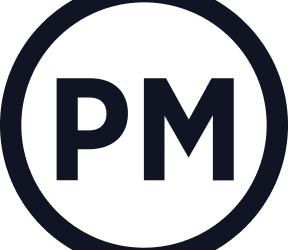Executive Summary
Trust—not tools—makes or breaks projects. This blog recaps key insights from the Escalate Smarter: Building High-Trust Teams with RAID Logs webinar, where leaders explored how RAID Logs (Risks, Assumptions, Issues, Decisions) help teams surface challenges faster, improve visibility, and build alignment. Real-world examples showed RAID Logs accelerating decision-making, preventing costly missteps, and fostering accountability. By normalizing escalation and creating transparency, RAID Logs transform from a simple tracking tool into a culture-shaping practice. The article closes with a call to action for project leaders to become certified RAID Log Practitioners, bringing these benefits to their own organizations.
Building High-Trust Teams with RAID Logs
In today’s fast-paced world of project delivery, one truth remains constant: projects don’t fail because of tools, they fail because of trust. The recent “Escalate Smarter” webinar, led by RAIDLOG.com and Kolme Group, dug into how RAID Logs (Risks, Assumptions, Issues, and Decisions) aren’t just a project tracking mechanism—they are a catalyst for team alignment, transparency, and high-trust collaboration.
Why Trust is the Secret Ingredient in Project Success
Every project manager knows the technical side of delivery: timelines, budgets, scope, and tools like Gantt charts or Jira. But often, the hidden challenges aren’t about resource allocation—they’re about people. Misaligned expectations, hidden risks, and delayed escalations can quietly undermine the best-planned project.
RAID Logs give teams a shared space to surface the uncomfortable truths early. By writing down assumptions, risks, and issues where everyone can see them, leaders reduce friction and uncertainty. Transparency builds confidence. And confidence builds trust.
As one panelist put it during the session: “Trust is created when there are no surprises. RAID Logs remove the shadows from your projects.”
What a RAID Log Really Does
At first glance, a RAID Log might look like another spreadsheet. But in practice, it’s much more:
- Risks: Anticipate what could derail progress before it becomes a crisis.
- Assumptions: Document expectations so they can be validated—or corrected.
- Issues: Track problems openly, ensuring accountability and quick resolution.
- Decisions: Record choices made, so they’re never lost in email threads or hallway conversations.
Unlike static project documents, RAID Logs become a living, breathing artifact of team culture. They create space for candid conversations and allow leaders to escalate concerns in a way that is constructive, not confrontational.
Escalation Without the Drama
One of the highlights of the webinar was the discussion on escalation management. Too often, “escalation” has a negative connotation—teams feel like they’ve failed when a problem has to be raised. But the truth is, escalation done right is a sign of a healthy, functioning system.
RAID Logs normalize escalation. When risks and issues are documented from the start, there’s no blame in surfacing them—it’s simply part of the process. Instead of pointing fingers, the conversation shifts to: “Here’s the risk. Here’s who owns it. Here’s what we’re doing about it.”
This shift changes the tone of project management. Escalation becomes a way to protect delivery, not protect egos.
Real-World Wins
During the webinar, several real-world stories were shared:
- A global transformation project team discovered that by logging assumptions, they avoided costly rework when executives realized their expectations didn’t match the delivery model.
- A healthcare PMO used RAID Logs to accelerate decision-making during a system rollout, cutting down weekly leadership meetings from two hours to 30 minutes because decisions were documented and accessible.
- A nonprofit leveraged RAID Logs to keep volunteers and staff aligned, building credibility with stakeholders and donors who could see that risks were being proactively managed.
In each case, RAID Logs became more than a tracking tool—they were a trust-building tool.
From Visibility to Accountability
Another key theme was accountability. RAID Logs make it crystal clear who owns what. Instead of vague action items floating in inboxes, each entry is assigned, time-bound, and followed up. This doesn’t just help teams stay on track—it helps individuals feel supported rather than overwhelmed.
Leaders in the session noted that this accountability fosters psychological safety: when people know they’re supported and that problems will be tracked objectively, they’re more willing to raise their hand early when something isn’t working.
Bringing RAID Logs Into Your Organization
A question raised during the live session was: “What’s the most effective way to introduce RAID Logs to a team that has never used them before?”
The advice shared was simple: start small and lead by example.
- Begin with one project.
- Populate the RAID Log with a handful of genuine risks and assumptions.
- Use it actively in meetings so your team sees the value.
- Celebrate small wins—when a logged risk is avoided or an assumption is validated, point it out.
Over time, teams move from skepticism to advocacy. And once they’ve experienced the benefits, RAID Logs often spread organically across programs and portfolios.
Why Now?
In today’s environment—remote teams, complex portfolios, and increasing executive scrutiny—visibility and alignment aren’t optional. They’re survival.
Project leaders who embrace RAID Logs aren’t just managing projects; they’re building a culture of trust and delivery excellence. And that culture is what sets high-performing organizations apart.
Ready to take action?
If your projects keep getting blindsided by hidden risks…
If your team escalations feel more like blame than solutions…
If your stakeholders want confidence but only see surprises…
👉 Then it’s time to bring RAID discipline into your projects.
RAIDLOG.com helps leaders build high-trust teams through:
-
RAID Log Practitioner Certification
-
Hands-on frameworks for risk, issue, and decision management
-
Proven strategies to normalize escalation and accelerate delivery
-
Practical tools to align teams and stakeholders
Start today—become a RAID Log Practitioner and lead your projects with clarity, trust, and confidence.
Reach out at ppmanswers@kolmegroup.com to learn more!
The post Escalate Smarter: Building High-Trust Teams with RAID Logs appeared first on Kolme Group.





